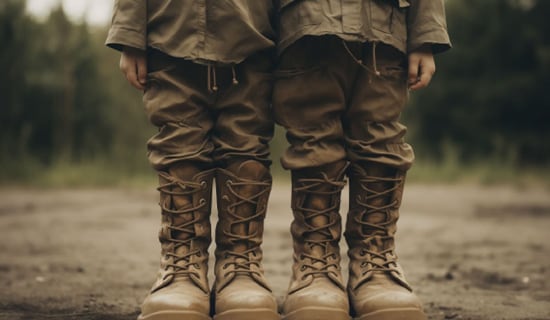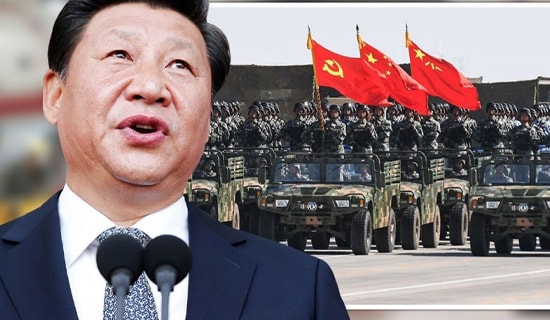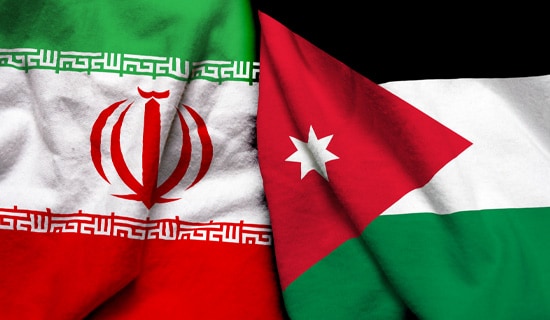Background: Iran's Strategic Considerations Since the days of Muhammad Reza Shah, Iran has perceived itself as a regional superpower.[1] In accordance with this view, it aspires to arm itself with both conventional and non-conventional weapons (long-range ballistic missiles and nuclear weapons), even though publicly Iran disavows its intention to acquire nuclear weapons. Iran's strategic goals in its effort to become a regional superpower are:
Firstly, to establish a superior regional position amongst states which neighbor it, such as Iraq, Saudi Arabia, as well as the Muslim republics of Central Asia; amongst regional neighbors such as Turkey, Egypt, and Israel; and finally, to establish an equal status with the other regional nuclear superpowers Pakistan and India.
Secondly, to strengthen its position as an Asian-Islamic center of power recognized as such by the U.S. and Europe, and amongst the Non-Aligned Movement (NAM).
In addition, Iran desires to compete with Turkey and Russia for influence in Afghanistan and Central Asian countries and to influence the agenda of the Muslim world. Lastly, Iran strives to influence Palestinian strategy and policy.
Iranian – Russian Cooperation on Conventional Arms
Since the cutting off of American military supplies to Iran following the Islamic Revolution, and the sanctions posed by the U.S. on commerce with third party companies,[2] Iran began to rely primarily on Soviet and Russian made weaponry.[3] From the Russian point of view, its cooperation with Iran is helping rebuild the Russian military industry (including Research and Development of strategic weapons) which has faced financial difficulties emanating from the end of the Cold War. Russian President Vladimir Putin expressed public satisfaction regarding the cooperation between the two countries on this issue.[4] During their separate visits to Moscow, both Iran's President Muhammad Khatami, in March 2001, and Minister of Defense Ali Shamkhani, in October 2001, signed military cooperation agreements and arms deals with Russia valued at $7 billion dollars over the coming years.[5]
Iran and Russia have arms contracts dating back to the 1990s, when Iran received over one hundred T-72 tanks from Russia and even began indigenous manufacturing of tanks upon obtaining Russian license. Iran was also equipped with artillery, anti-aircraft and air-defense systems, armored vehicles, Mi-17 helicopters and other military supplies.[6]
In 2000, Iran made a strategic decision to modernize its military build-up in a twenty-five year program, relying on Russian technology and weaponry.[7] The program includes the following elements:
The creation of an integrated anti-aircraft and anti-missile defense system, including the anti-aircraft missile system S-300, and aerial defense system of medium and short-range missiles (SA-11, and SA-15 respectively); the creation of an aerial defense system for the defense of nuclear and military facilities; the licensed production of weapons – artillery, airplanes, and warships; modernization of aircraft and aviation equipment, and modernization of three Kilo-type submarines purchased from Russia. The plan also calls for the establishment of training, repair, and service centers for Iran's land, sea, and air forces; a space program with the goal of launching six satellites; and the training of hundreds of military and technical experts in Russian training facilities.[8]
A close examination of the program indicates that Iran aspires to establish a powerful industrial-military complex, which will also be used for manufacturing weapons for export.[9]
Nuclear Cooperation
In the mid 1990's, Iran signed an $800 million contract with Russia to build a water-cooled nuclear reactor in Bushehr.[10] The framework agreement between the two nations mentions the possible construction of four nuclear reactors, two of the VVER-1000 type, similar to the one currently under construction in Bushehr, and two additional VVER–440 types amounting all together to $3 billion.[11] Last November, Iran received the reactor's shell and other components of the first reactor. In February 2002, the Tehran-based Iran Daily reported that Russia's Ministry of Atomic Energy announced that the reactor would be inagurated in September 2002.[12] However, two high-ranking Russian officials stated that the date would be far later. Russian Deputy Minister of Atomic Energy Yevgeny Reshetnikov stated that the first unit of the power plant would be activated by the end of 2003,[13] and Russian Deputy Nuclear Energy Minister Valerii Lebedev said Russia plans to complete construction by late 2004 or early 2005.[14] In addition, recent media reports claimed that Russia would build another nuclear reactor in Iran.[15]
In his visit to Moscow in March 2001, Khatami expressed concern with the mounting delays in the construction of the Bushehr nuclear power plant,[16] but Moscow recently announced that it fully intends to fulfill its side of the contract.[17] Member of the Majlis, Kazem Jalali, who belongs to the National Security and Foreign Policy Committee, said: "We [Iran] have nuclear cooperation with Russia and they have acted positively in this regard." He added that "the Russians want to work with us and we should encourage them."[18]
Both Russia and Iran repeatedly claimed that their nuclear cooperation is for peaceful purposes.[19] Iran has emphasized that it arms itself only for self-defense and that its nuclear program is designed for peaceful purposes, such as "energy, agriculture, and environment,"[20] and therefore, it is legitimate. In statements and in editorials in the Iranian media, high-level Iranian officials stressed that Iran's nuclear facilities are subject to regular inspection and monitoring by the International Atomic Energy Agency safeguards.[21] The spokesmen further emphasized that Iran is a signatory to the various international arms control and disarmament conventions.[22]
Cooperation on Ballistic Missiles
Iran is also developing medium and long-range missiles, which are perceived as strategic weapons. In 1985, former Iranian president Hashemi Rafsanjani signed an agreement with North Korea for the delivery of North Korean missiles at a value of $500 million. Iran is also engaged in indigenous development of engines and other components for the Shihab missile.[23] The Shihab missile is considered by Iran as a means of deterrence and defense primarily against Iraq. In an interview with the London Arabic Daily Al-Sharq Al-Awsat, Iranian Defense Minister Rear-Admiral Ali Shamkhani, underlined that Iran is working on development of its ballistic capabilities, especially the Shihab 3, with an 800 mile range: "We focus now on making this missile extremely accurate and extremely fast from a tactical perspective, [we also try to] shorten its pre-launching time, [as well as] its destructive and explosive capability in accordance with the internationally accepted standard for defense weapons."[24]
According to reports from Russian scientists who worked in Iran, it seems that many of them were involved in assisting in the development of the Iranian ballistic missile deployment and the nuclear industry. Vadim Vorobei, a Russian missile scientist who worked in Iran for several years and helped in the build up of the Iranian missile deployment, admitted that the Iranians are "paranoid," and that "they wanted to receive information from us, but at the same time they were not willing to tell us everything they were doing. That made it difficult to help them."[25] Alexi Krasnov, Head of External Relations in the Russian Space Agency, disclosed in the PIR Institute's(The Center for Policy Studies in Russia) conference on security affairs, that several Russian companies (out of the 10 under U.S. sanctions) were "cover-up" companies, which were actually established to export sensitive technologies. He also called on the West to expand its cooperation with factories for missile production in Russia in order to distance the experts in these companies from "suspicious customers." He added, not allowing the Russian Space Industry legitimate cooperation abilities might lead to illegal contacts, which would be hard to monitor.[26] The German Foreign Minister Joschka Fischer later warned Russia not to sell Iran long-range ballistic missiles capable of carrying chemical and biological warheads.[27]
Iran and International Conventions on Weapons of Mass Destruction (WMD)[28]
The Secretary of the Iranian Supreme National Security Council, Hassan Ruwhani, a senior official who is also a confidant of the 'Supreme Leader,' Ali Khamenei, explained in a rare statement, Iran's position regarding international arms control and armament conventions: "The reason that Iran becomes signatory to international conventions is to pave the way for access to modern technology which developed countries have made commitments to provide." On the issue of technology transfer, Ruwhani complained to the Chairman of German Parliamentary Commission on Foreign Affairs Hans Ulrich Klose that, "it is not comprehensible that Iran makes unilateral commitments by signing the international conventions while the developed nations including Germany, do not observe their commitment to supply modern technology."[2]9
Iran is a party to the nuclear Non-Proliferation Treaty (NPT, 1970), the Geneva Protocol, which prohibits the use of chemical and biological weapons (1925), the Chemical Weapon Convention (CWC, 1993), the Biological Weapon Convention (BWC, 1975), and is a signatory to the Comprehensive Test Ban Treaty (CTBT), which prohibits nuclear testing, although Iran did not ratify it.[30]
However, Iran did not accede to the 'Additional Protocol' (also known as '93+2') which was created following the Gulf War and constitutes additional safeguards for achieving the maximum degree of assurance of both the non-diversion of nuclear materials declared for peaceful purposes, and the absence of undeclared nuclear materials and activities.[31]
There is no international convention relating to ballistic missiles. However, during the 1980s, due to an American initiative, the export control regime on missiles, MTCR (Missile Technology Control Regime) was established. This regime is enforced by 32 countries, including Russia and European countries, which accepted voluntarily limitations on the transfer of missiles technology and dual use components, for missiles with the range of over 170 miles and with 660 lbs. payload.
Iran advocates a legalistic approach, namely it presents itself as adhering to international law by becoming a signatory to international conventions. It perceives missile development as a part of conventional arms development and therefore a legitimate act. Iran's Defense Ministry Spokesman Keivan Khosravi said, "Iran's missile plans are … its natural right and in line with developing Iran's capabilities in the aerospace field."[3]2
Iran generally objects to the 'Export Control Regimes' and in particular to the MTCR, claiming that these regimes discriminate developing countries and prevent them from acquiring relevant material and technology. Iran sees the 'Export Control Regimes' as an example of Western supremacy over developing countries, and is trying to advance a different approach: a UN resolution on missiles, which requests the UN Secretary General to establish a group of governmental experts.[33]
SUPPORT OUR WORK

Despite the fact that long-range ballistic missiles are advocated by Iran as vital for defense and deterrence against Iraq, the range of missiles produced by Iran exceeds the range of defense and deterrence against Iraq and, in fact, reaches Israel and Europe ('Shihab 3' range of 800 miles; 'Shihab 4' range of 1200 miles).
Following consultations between President Khatami, Defense Minister Shamkhani, and Iran's military commanders, the London-based daily, Al-Sharq Al-Awsat, reported that Iran recently decided to stop the development of the 'Shihab 4' missile so that it is not charged with threatening Europe or the U.S. The development of the 'Shihab 3,' however, continues.[34]
*Ayelet Savyon is Director of the Iranian Media Project.
[1] With the British announcement in 1968 on its future withdrawal from the region in 1971, Iran demanded in return for conceding Bahrain, which was regarded by Iran as an Iranian territory, to be recognized by Britain as a regional superpower.
[2] The Iran Libya Sanction Act (ILSA) was renewed by the Bush Administration August, 2001.
[3] See Iranian and Russian statements regarding this issue: "In the last few years Russia has become Iran's primary arms supplier." Afarinsh, February 19, 2002; Norouz, February 20, 2001; Tehran Times, February 17, 2002.
[5] IRNA, October 1 and 4, 2001; December 17, 2001.
[6] Jane's Defense Weekly, November 28, 2001; Ze'ev Wolfson, "The 'Russian Factor' in the Middle East Military Balance," Ariel Center for Policy Research, no. 133, pp. 19-20.
[7] The agreements signed in 2001 practically nullified "The Gore-Chernomyrdin Agreement' signed in 1995 between the U.S. and Russia aiming at limiting the sale of Russian conventional weapons to Iran. With the change of administrations in both the U.S. and Russia in November 2000, Moscow announced that it is no longer committed to this agreement. Shamkhani also said that the arms contracts, which were signed with Russia, are considered as "cancellation of the imposed Gore-Chernomyrdin pact" and "open a new chapter in the constant and long term cooperation between the two countries." IRNA, October 6, December 17, 2001.
[8] See reports about visits of high-ranking military navy and air-forces delegations, IRNA, October 4, 2001; Shamkhani announced that Iran is building double-deck warships and torpedo boats in addition to the development of a marine missile industry, IRNA, February 13, 2002; Rasalat, January 14, 2002; Tehran Times, February 17, 2002; Ze'ev Wolfson, "The "Russian Factor" in the Middle East Military Balance," Ariel Center for Policy Research, no. 133, pp. 20-21.
[9] Former Iranian president Hashemi Rafsanjani made conflicting statements in this regard: in the Tehran Times he said, "Iran today is one of the leading arms industry powers in the world," January 8, 2002, and in IRNA, he denied the fact that Iran "[sells] weapons and is not interested in arms sale," January 6, 2002.
[10] The reactor was ordered in the beginning of 1994 after the German constructor, Siemens withdrew, due to American pressure. Tehran Times, November 18, 2001.
[11] For more details see Brenda Shaffer, Partners in need: The Strategic Relationship of Russia and Iran, The Washington Institute for Near East Policy, no. 57, p. 73.
[12] Iran Daily, February 17, 2002.
[14] ITAR-TASS quotes RFL/RL, February 14, 2002.
[15] Jane's Defense Weekly, November 28, 2001; Norouz, February 20, and February 28, 2002; Entekhab, March 5, 2002, IRNA, March 8, 2001.
[16] Tehran Times, November 18, 2001. The Iranian Ambassador to Russia Gholam-Reza Shafei announced that the operation of the reactor will be delayed until late 2003 and that Iran is not happy about it. Norouz, February 28, 2002.
[17] RFE/ RL, February 14, 2002. Russian Deputy Minister of Atomic Energy Yevgeny Reshetnikov stated that Russia is going ahead with completing the power plant. IRNA, March 4, 2002.
[18] IRNA, February 19, 2002. Just before Iranian Foreign Minister Kharrazi took off for a visit to Moscow, Russia announced that the visit scheduled for February 19,2002 was postponed. A few days later the Persian paper Bonyan reported that "Russian experts are leaving the nuclear reactor in Bushehr back home," following Russia's Energy Minister's statement on a change in the policy of cooperation between Tehran and Moscow, Bonyan as quoted by IRNA, February 25, 2002. In reaction, Iran denied any change in the Russian policy towards it and claimed that the 180 Russians who left the Bushehr plant did it as a regular shifts exchange upon Tehran's request. IRNA, February 26, Norouz, February 28, IRNA, March 4, 2002. Further more, Russia also denied the report about Russian experts leaving Bushehr, IRNA, March 4, 2002. Managing Director of the Russian Institute for Nuclear Equipment Export Victor Kouzlov vowed Russia would not stop its nuclear cooperation with Iran. IRNA, March 8, 2002.
[19] The Issue of Iran's armament, with an emphasis on nuclear weapons, made headlines especially following Rafsanjani's statement on "the elimination of the Israel problem with the use of one nuclear bomb": "If one day the Muslim world will be equipped with the weapons that Israel has now – that day, will bring the world's arrogance to a dead end. Since the use of one nuclear bomb against Israel will leave nothing on the face of the earth, however, to the Islamic world it will only inflict damage." Kayhan (Persian), Al-Wifak (Arabic); Iran News (English) December 15, 2001.
[20] Tehran Times, January 17, 2002.
[21] The Iranian Press dealt with this topic in detail following Rafsanjani's declaration on December 14, 2001. For instance: Tehran Times (affiliated with the Iranian Ministry of Foreign Affairs), December 11, 2001, January 8, 2002, and January 17, 2002.
[22] This position enables Iran to attack the U.S. since the U.S. hasn't ratified the CTBT (Comprehensive Test Ban Treaty, which prohibits the use of nuclear testing) and since the U.S. applies a double standard with regard to Israel, allowing it to arm itself with WMD and not join different conventions. Tehran Times, January 8, February 6, 2002. In this connection, the Russian Defense Minister Sergey Ivanov implied that Iran might withdraw unilaterally from the NPT, and promote independently its nuclear and missile projects; Interfax, December 18, 2001, Nezavisimaya Gazeta (Russian), December 19, 2001.
[23] Washington Post, January 13, 2002. "Shihab 3' missiles are manufactured according to the North Korean No Dong missile and are based on Soviet Scud technology.
[24] Al-Sharq Al-Awsat, February 5, 2002.
[25] Washington Post, January 13, 2002.
[27] IRNA, February 20, 2002, quoting APF, February 19, 2002. The German Foreign Ministry's spokesperson later denied this report. IRNA, February 20, 2002.
[28] Besides international conventions on WMD, Iran is not a signatory to the CCW (Certain Conventional Weapons) Convention, which relates to certain conventional weapons, which may be deemed to be excessively injurious or to have indiscriminate effects. Iran hasn't signed the Ottawa Convention on landmines.
[30] There are two stages for being a state party to an international convention: the first – signing and thus becoming politically committed to its objectives, and the second - ratification, meaning accession to the convention and fully incorporating its provisions to the domestic law. It is important to note that, if a nation is determined to develop/ acquire WMD, it will do that regardless of its status vis-à-vis the international convention. Iraq, for example, is a state party to the NPT, the Geneva Protocol and the BWC and was reluctant to fulfill its obligations under these conventions.
[31] United Nations Disarmament Yearbook, Vol. 25, 2000, pp. 51-54.
[32] Tehran Times, July 10, 2001.
[33] The Iranian initiative presented as UN General Assembly Resolution: A/RES/56/24, 68th plenary meeting, November 29, 2001. The group was in fact established in August 2001.
[34] The "Shihab 4' and "Shihab 5' models (with the range of 5000 kilometers – 2000 miles) were under development, Al-Sharq Al-Awsat, February 22, 2002.




